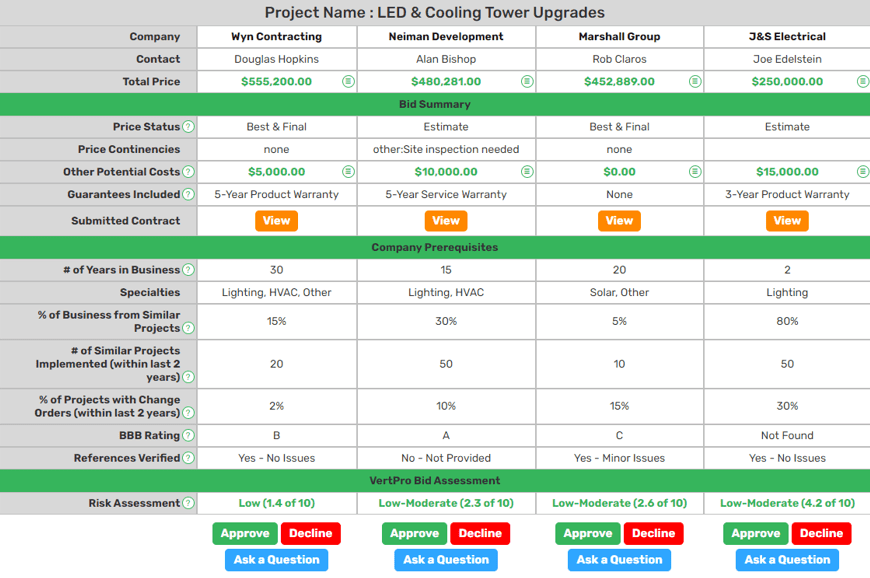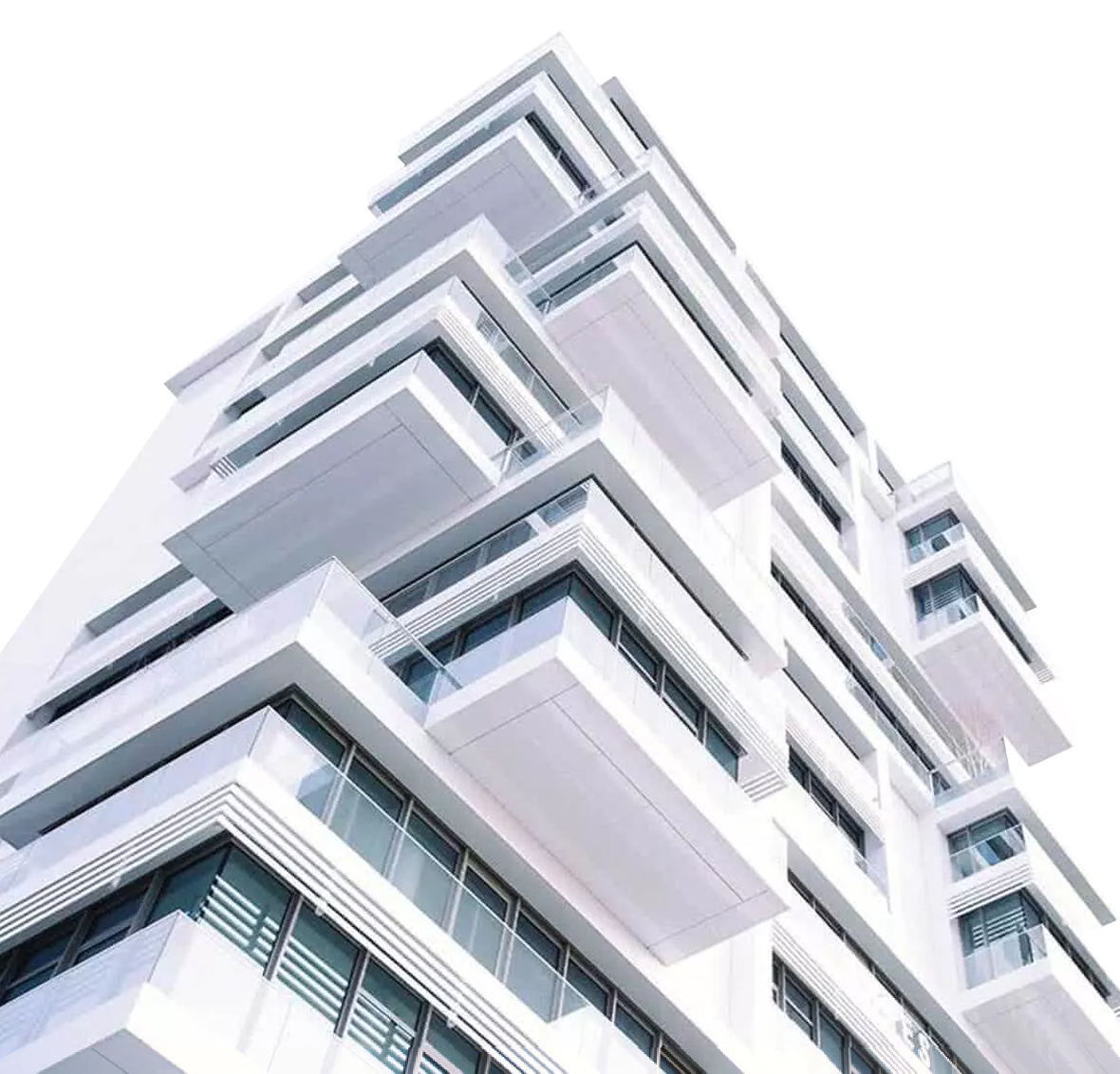VertPro® Energy Benchmarking Platform
Los Angeles Codes and Regulations for Building Upgrades
Our mission is to help commercial building owners and property managers comply with various energy-related laws and ordinances. There are multiple ordinances for builders and property managers in Los Angeles to be aware of to align your development or project with city standards.
Please use this page as a resource for learning more about energy upgrades. We can also connect you with a network of contractors to find bids for energy-related projects.
Different Types of Building Codes in Los Angeles
The City of Los Angeles has ten principle building codes:
- Use and Occupancy Code
- General Building Height and Area Limitations
- Fire and Smoke Protection Code
- Energy Conservation Code
- Green Building Code
- Los Angeles Plumbing Code
- Elevator Code
- Existing Building Code
You can click these links to be taken to the actual code language itself. You can also find a brief overview of them below.
Use and Occupancy Code
This covers the general classification of all buildings and structures as to occupancy and use. There are different classifications of occupancy and use based on the varying degrees of hazard risk to adjacent properties and building occupants.
General Building Height and Area Limitations
This section details the limitations relating to building height, number of stories, and other building areas based on the types of construction and occupants.
Fire and Smoke Protection Code
The Fire and Smoke Protection Code chapter details the regulations associated with the materials, systems, and assemblies used for structural fire resistance and fire-resistance-rated construction separation of adjacent spaces to protect against smoke and fire from spreading throughout the building or to other buildings.
Energy Conservation Code
This code deems that buildings must be designed to comply with the requirement of the California Energy Code.
Green Building Code
Green Building Code specifies mandatory and voluntary green building measures for the construction of structures covered by this code. They apply to the construction of every new building, and every building alteration with a building permit valuation of at least $200,000 or more. Building additions are also included in this code.
Los Angeles Plumbing Code
LA Plumbing Code covers all plumbing mandates, including materials of various grades, weights, quality, and configurations. It contains a list of accepted plumbing standards and references solar thermal energy systems for more energy-efficient properties.
Elevator Code
Elevator code deals with the design, construction, installation, alteration, inspection, maintenance, testing, operation, repairing, and licensing of all types of elevators, escalators, lifts, conveyors, chairlifts, wheelchair lifts, and more.
Existing Building Code
This code’s purpose is to establish requirements for safeguarding the public health, safety, and general welfare of people via regulations on repair, alteration, change of occupancy, addition to, and relocation of existing buildings. Building demolition is also included in this code’s scope.
What are building codes and regulations?
Building codes, otherwise known as building regulations, are ordinances and laws specific to constructed structures, including but not limited to buildings. In the United States, building codes vary depending on the city and often follow the International Building Code (IBC). In addition, each city modifies and amends its building regulations depending on its needs.
Buildings must conform to the local requirements to obtain the proper construction permits. The goal is to ensure the safety, health, and general welfare of construction and occupancy.
Building codes generally regulate:
- Structure requirements, sizes, wall assemblies, egress (evacuation) rules, standards for rooms, foundations, flooring, roofing, electricity, occupancy, and more
- Parking and traffic
- Fire safety
- Natural disaster safety: seismic code, hurricane, floods, and tsunami resistance
- Specific building use such as hospitals, prisons, flammable substance storage, etc.
- Energy consumption and efficiency
Building-specific city ordinances can also include:
- Grandfather clauses allowing the older buildings to be exempt from complying with new building regulations until they are renovated
- Specification on material that can be used
- Regulated installation methodologies
- Qualification requirement for the general contractors completing the work
Importance of Finding A Good General Contractor
Find a reliable general contractor to help you stay within new building regulations. Some essential items to look for are:
- The number of years they have been in business
- Their specialty
- The number of similar projects they completed
- The percentage of projects with change order in the last two years
- Their Better Business Bureau (BBB) rating
- Their references
Keep an eye out for the number of change orders associated with a contractor. Change orders are the adjustments and modifications the contractor must make after delivery to meet the agreed-upon expectations. If the number of change orders is low, that is a good sign that the contractor delivers what they promised.
Their BBB rating tells you a lot about a business and how they handle customers. The organization helps bridge the gap between consumers and companies. While BBB ratings do not guarantee a company’s reliability or performance, they can help you make an informed decision. These ratings factor in the contractor’s abilities to:
- Build trust
- Advertise honestly
- Tell the truth to customers
- Be transparent
- Honor promises
- Be responsive
- Safeguard privacy
- Embody integrity

Why Work With VertPro®?
VertPro® allows you to save time by eliminating the need to look for multiple contractors. We handle all vetting through checking licenses, references, online reviews, and project history.
In addition, we have a Bid Comparison Tool that allows you to effortlessly compare all contractors proposals at once. Our process is cost-effective and will enable you to get multiple bids.
How Our Process Works
Step One: Get Bids
Receive bids from multiple pre-screened and vetted contractors in your area.
Step Two: Select Contractor
Use our Bid Comparison Tool to compare bids side-by-side in real-time so you can make the best decision for your project goals.
Step Three: Manage Projects
Our VertPro® dashboard allows you to manage all your projects with confidence and ease. Its user-friendly interface is quick to learn and organizes all projects seamlessly.
Get Bids Today On Your Projects
Stay in the know with all Los Angeles building codes and occupancy ordinances by choosing a reputable contractor. Start getting bids today and use our Bid Comparison Tool to find the perfect fit.
"*" indicates required fields
VertPro® Upgrades
One platform to get competitive bids on all your projects.
Get Bids
from multiple pre-screened and vetted contractors
Select Contractor
and reduce risk with our Bid Comparison Tool for an easy apples-to-apples comparison
Manage Projects
with confidence and ease from your VertPro® dashboard
Clients We Work With























